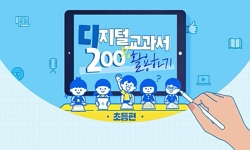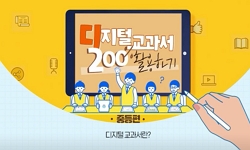Purpose: This study aims to evaluate two development initiatives introduced to provide inclusive education for deaf children and those with hearing impairments. Based on a thorough literature review of ongoing laws and policies on inclusive education ...
http://chineseinput.net/에서 pinyin(병음)방식으로 중국어를 변환할 수 있습니다.
변환된 중국어를 복사하여 사용하시면 됩니다.
- 中文 을 입력하시려면 zhongwen을 입력하시고 space를누르시면됩니다.
- 北京 을 입력하시려면 beijing을 입력하시고 space를 누르시면 됩니다.

Enhancing Inclusive Education for Hearing Impaired Students: An Evaluation of Development Cooperation Interventions in Rwanda
한글로보기https://www.riss.kr/link?id=A109660353
- 저자
- 발행기관
- 학술지명
- 권호사항
-
발행연도
2025
-
작성언어
English
-
주제어
Inclusive Education ; Deaf Children ; Theory of Change ; Rwanda ; Digital Textbook ; 통합교육 ; 청각장애아동 ; 변화이론 ; 르완다 ; 디지털교과서
-
등재정보
KCI등재
-
자료형태
학술저널
-
수록면
25-44(20쪽)
- 제공처
-
0
상세조회 -
0
다운로드
부가정보
다국어 초록 (Multilingual Abstract)
Originality: Despite the emphasis on inclusive education in the overarching education Sustainable Development Goal and its related target SDG 4.5, there is limited research on how inclusive education for children with disabilities is offered in the Global South. In the academic literature, the discussion revolves around whether appropriate policies have been introduced, factors that contribute to inequalities for deaf children, and the presence or the lack of official sign language in the country. This paper delves into development projects that aim to enhance educational opportunities for deaf children in a low resource setting to highlight which unmet needs have been addressed and require further support and consideration for international development cooperation.
Methodology: This study offers a comparative case study of two development projects, the Global Accessible Digital Textbook Initiative (ADT) and the Resource Center (RC), rolled out through the support of development donors, including UNICEF and the World Bank, respectively. Two projects are compared based on the theory of change (ToC) developed for each project by the authors based on project reports.
Result: The results of ToC were interpreted across the three main agents: 1) students, parents and citizens, 2) frontline providers and 3) government, according to Pritchett (2015). In the current format, ADT and RCs are geared towards students already in the education system, though some RCs may be accessible to out-of-school children. At the teacher and school level, there has been considerable capacity building for the ADT, but relatively small emphasis on identifying disabilities early on. At the government level, establishment of relevant ecosystem or committees was pursued for ADT, but not for RC.
Conclusions and Implication: Both ADT and RC have contributed to the overarching goal of delivering universal and equitable access to education. Yet, there is room for improvement on two fronts. First, additional indicators need to be collected and shared for more nuanced assessment beyond measuring progress on the delivery of outputs. Second, ADT and RC are inherently complementary, since ADT is more student-centered development project, while RC is school or community-level project. The engagement of diverse stakeholders in the ADT initiative is worthwhile noting, since there is relatively limited information about the scope of collaboration happening to increase the use of RCs. Learning about successful and failed activities across ADT and RC may provide lessons learned for Rwanda and other countries with limited resources keen on providing better opportunities for deaf and hard-of-hearing students.
Purpose: This study aims to evaluate two development initiatives introduced to provide inclusive education for deaf children and those with hearing impairments. Based on a thorough literature review of ongoing laws and policies on inclusive education in the East African region, the authors delve into the case of Rwanda, which has not only established relevant policy framework but also has publicly shared development cooperation initiatives on inclusive education.
Originality: Despite the emphasis on inclusive education in the overarching education Sustainable Development Goal and its related target SDG 4.5, there is limited research on how inclusive education for children with disabilities is offered in the Global South. In the academic literature, the discussion revolves around whether appropriate policies have been introduced, factors that contribute to inequalities for deaf children, and the presence or the lack of official sign language in the country. This paper delves into development projects that aim to enhance educational opportunities for deaf children in a low resource setting to highlight which unmet needs have been addressed and require further support and consideration for international development cooperation.
Methodology: This study offers a comparative case study of two development projects, the Global Accessible Digital Textbook Initiative (ADT) and the Resource Center (RC), rolled out through the support of development donors, including UNICEF and the World Bank, respectively. Two projects are compared based on the theory of change (ToC) developed for each project by the authors based on project reports.
Result: The results of ToC were interpreted across the three main agents: 1) students, parents and citizens, 2) frontline providers and 3) government, according to Pritchett (2015). In the current format, ADT and RCs are geared towards students already in the education system, though some RCs may be accessible to out-of-school children. At the teacher and school level, there has been considerable capacity building for the ADT, but relatively small emphasis on identifying disabilities early on. At the government level, establishment of relevant ecosystem or committees was pursued for ADT, but not for RC.
Conclusions and Implication: Both ADT and RC have contributed to the overarching goal of delivering universal and equitable access to education. Yet, there is room for improvement on two fronts. First, additional indicators need to be collected and shared for more nuanced assessment beyond measuring progress on the delivery of outputs. Second, ADT and RC are inherently complementary, since ADT is more student-centered development project, while RC is school or community-level project. The engagement of diverse stakeholders in the ADT initiative is worthwhile noting, since there is relatively limited information about the scope of collaboration happening to increase the use of RCs. Learning about successful and failed activities across ADT and RC may provide lessons learned for Rwanda and other countries with limited resources keen on providing better opportunities for deaf and hard-of-hearing students.
동일학술지(권/호) 다른 논문
-
- 국제개발협력학회
- 편집부
- 2025
- KCI등재
-
국제개발협력의 비의도적 효과(unintended effect) 평가: 이론적 고찰과 한국 ODA 사례 분석
- 국제개발협력학회
- 정지선(Jisun Jeong)
- 2025
- KCI등재
-
개발도상국 교육에서 ICT 인프라, 교사 ICT 역량이 ICT 수업활용에 미치는 영향: 협력적 교직문화의 조절된 매개효과를 중심으로
- 국제개발협력학회
- 조현아
- 2025
- KCI등재
-
- 국제개발협력학회
- 이미나
- 2025
- KCI등재




 KCI
KCI 스콜라
스콜라






